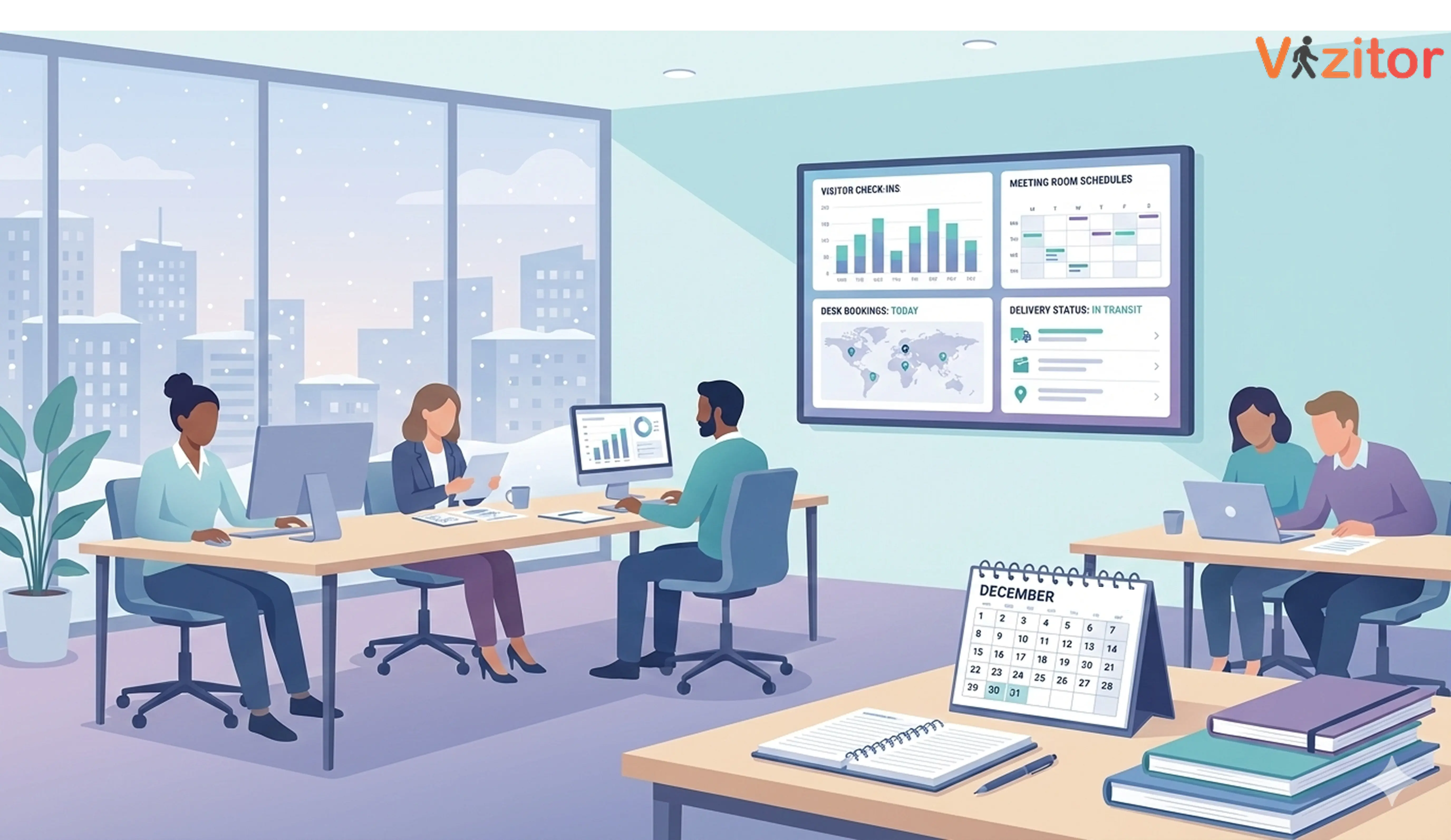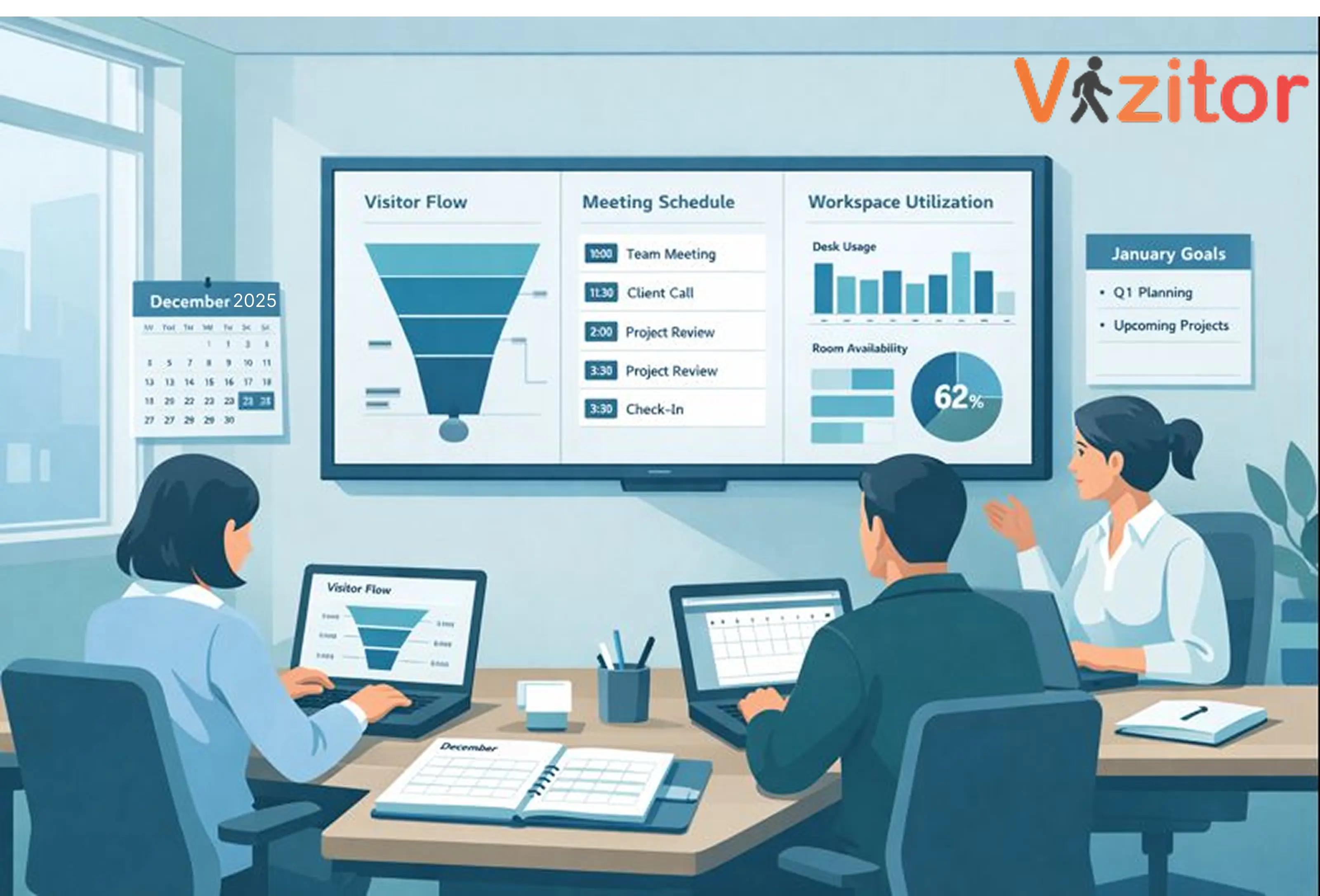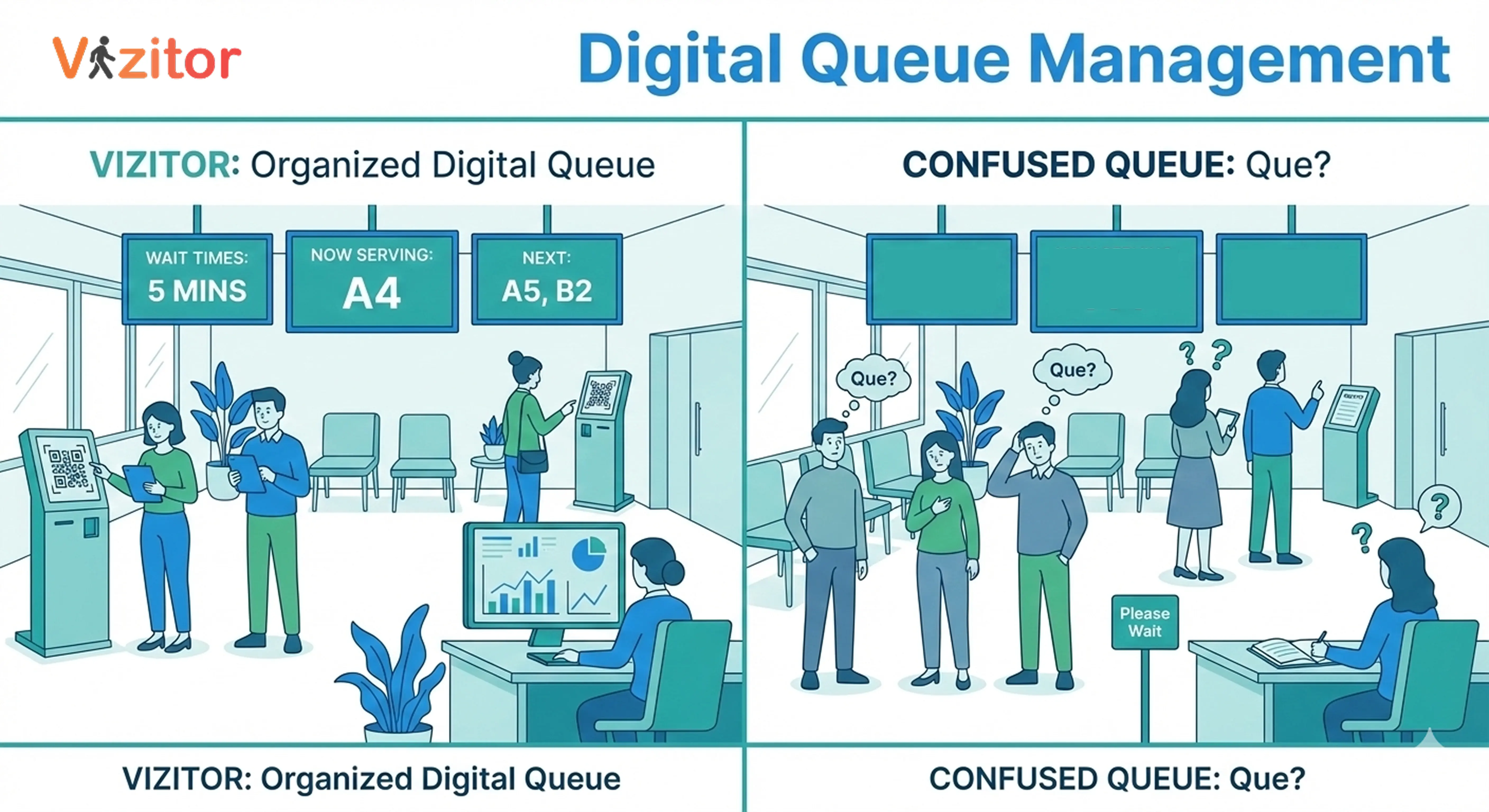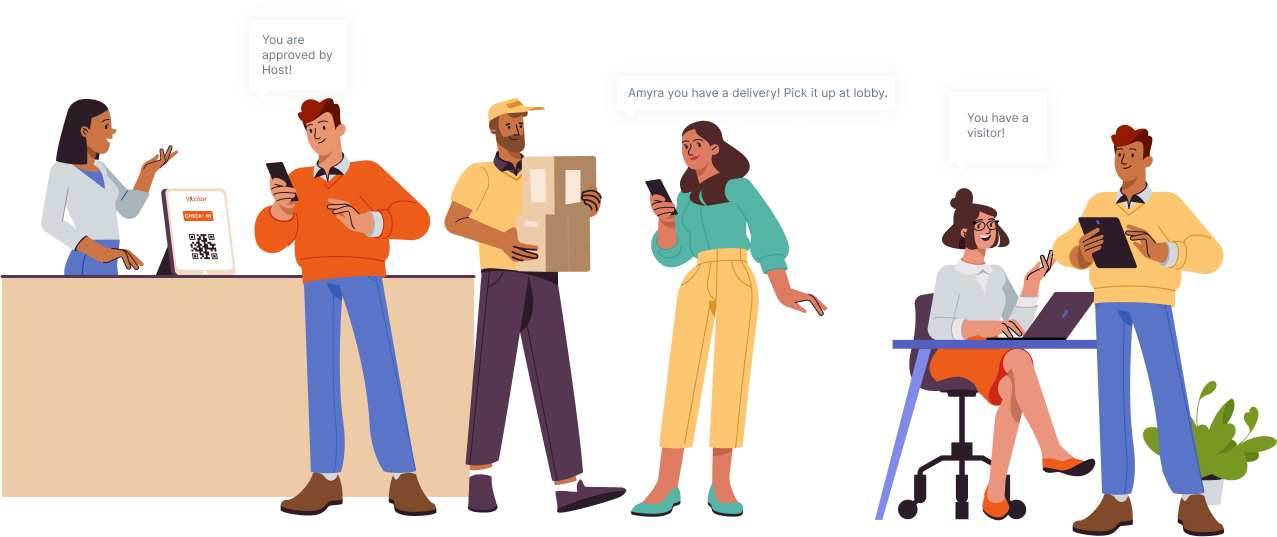Table of Content
Try Vizitor for Free!
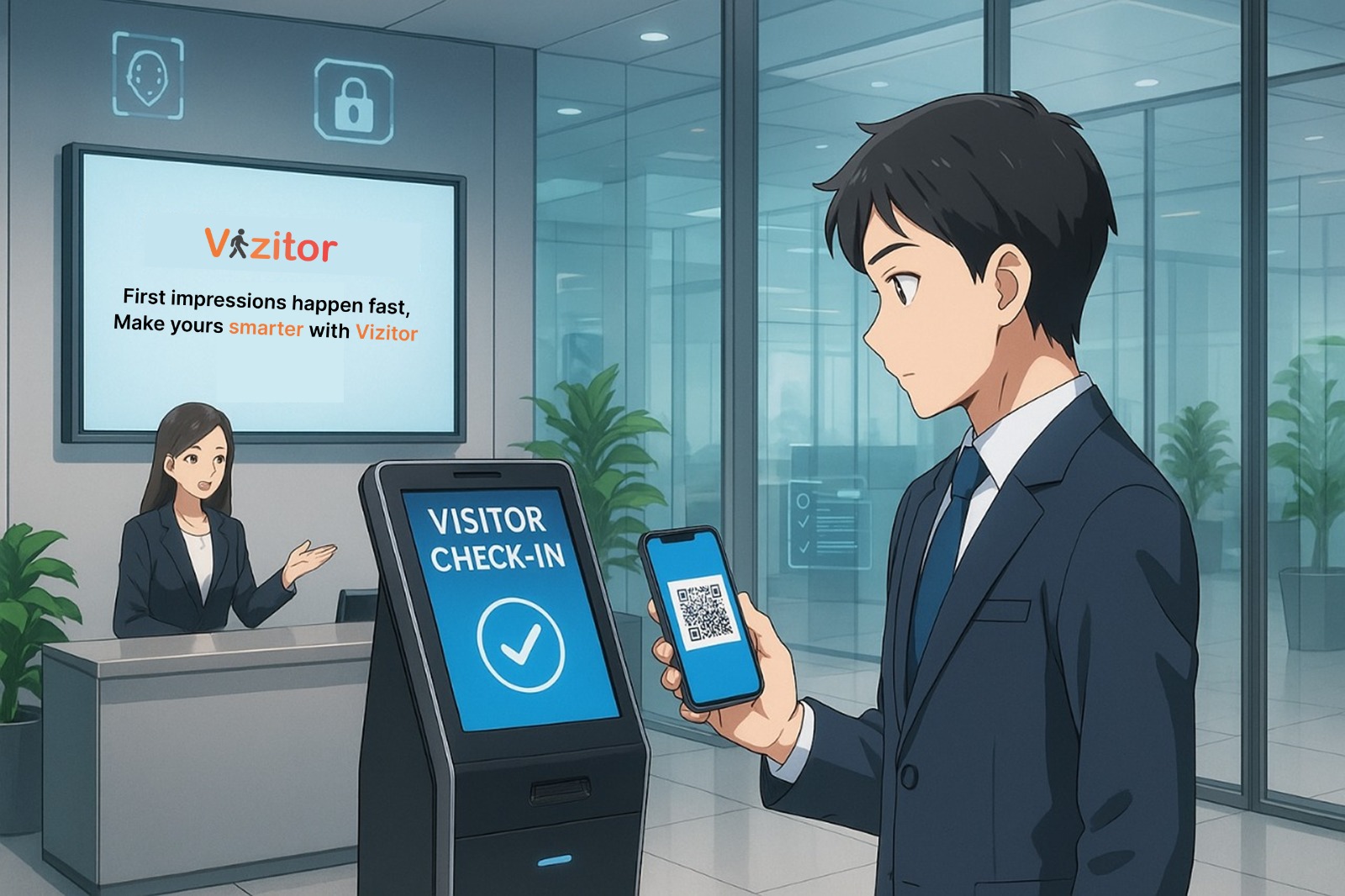
Published on: Mon, Aug 11, 2025
Read in 4 minutes
In today’s modern workplace, technology shapes everything from how we collaborate with remote teams to how we secure our office spaces. One area where innovation is reshaping the landscape is visitor management. The visitor management system (VMS) of 2025 isn’t just a front desk upgrade, it’s a security essential, a brand touchpoint, and a productivity booster.
Whether you’re a corporate office, co-working hub, healthcare facility, or educational institution, investing in a smart visitor management system is no longer optional. Here’s why every modern workplace needs to go digital at the front desk this year.
1. Strengthening Workplace Security
Security remains the top reason most organizations first consider a visitor check-in system for modern offices. In 2025, risks are more complex physical intrusions, data breaches, and compliance violations are ever-present concerns.
With a digital visitor management system, every entry and exit is securely logged, IDs can be verified, and access control systems can integrate seamlessly to grant or restrict entry. The result? Only authorized individuals get inside, and there’s a clear, searchable record of all visitors.
2. Delivering an Enhanced Visitor Experience
First impressions happen in seconds. In the modern workplace, the lobby is more than a waiting area, it’s your brand’s handshake. A touchless visitor check-in with a sleek interface welcomes guests with efficiency and professionalism.
Instead of flipping through paper sign-in sheets, visitors can scan a QR code or use a self-service kiosk for instant check-in. Some VMS solutions even greet guests by name, display custom branded welcome screens, and notify hosts in real-time.
3. Supporting Hybrid and Remote Work Environments
With hybrid work models dominating in 2025, visitor flow is less predictable. Some days your office might be buzzing; other days, it’s quiet. A digital visitor solution for modern offices adapts in real-time allowing you to pre-register visitors, manage deliveries, and integrate with meeting room booking systems.
This flexibility ensures the workplace remains secure and organized, regardless of fluctuating occupancy levels.
4. Streamlining Compliance and Audit Readiness
In sectors like healthcare, education, or finance, compliance is non-negotiable. A compliance-ready visitor log ensures your workplace can pass audits with ease. With a digital system, you get time-stamped records, visitor agreements, and ID verification all stored securely.
This makes it simple to demonstrate adherence to safety regulations, industry standards, or even pandemic-related entry requirements.
5. Reducing Operational Costs
While visitor management systems are an investment, they quickly deliver measurable ROI. Manual sign-in processes require dedicated staffing, consume paper, and lead to inefficiencies. Front desk automation reduces repetitive administrative work, allowing receptionists to focus on high-value guest engagement.
Additionally, visitor data analytics can identify peak visiting hours, helping optimize staffing and resource allocation.
6. Enabling Contactless and Touchless Check-Ins
The pandemic permanently shifted expectations for hygiene and contactless services. In 2025, touchless visitor check-in isn’t a luxury, it’s a standard. Visitors can check in via mobile devices, scan QR codes, or use facial recognition without touching shared surfaces.
This not only boosts safety but also aligns with tech-forward workplace experiences.
7. Integrating with Smart Workplace Technology
The modern workplace visitor management system is more than a standalone tool. It integrates with access control, Wi-Fi provisioning, calendar systems, and even HR software. This connectivity creates a single ecosystem where security, operations, and user experience are interconnected.
Imagine a visitor being pre-approved via email, auto-granted building access, and connected to guest Wi-Fi instantly upon arrival.
8. Boosting Brand Image and Professionalism
Your reception area speaks volumes about your company culture. Outdated paper logs can give the impression your workplace is behind the curve. A digital visitor management system reinforces your brand identity by showing you value innovation, efficiency, and guest experience.
Custom branding on welcome screens, visitor badges, and emails leaves a lasting, positive impression.
9. Preparing for Scalability and Future Growth
As your business grows, so will the number of visitors, contractors, and deliveries. A scalable visitor check-in system ensures you’re ready to handle increased traffic without sacrificing efficiency or security.
Cloud-based solutions make it easy to add locations, users, and integrations as your needs evolve.
10. Gaining Actionable Insights from Visitor Data
The true power of a digital visitor log is in the data. Data-driven visitor analytics can reveal patterns such as the busiest visiting hours, repeat visitors, or department-specific traffic. These insights can inform staffing decisions, marketing strategies, and even facility design.
With these metrics, your VMS becomes a strategic asset rather than just a security measure.
Conclusion: The Future of Visitor Management Is Here
In 2025, modern workplaces can no longer afford to view visitor management as an afterthought. A smart visitor management system delivers security, efficiency, compliance, and a polished brand experience all while preparing your workplace for the future.
Whether you’re looking to impress clients, meet regulatory requirements, or streamline operations, upgrading your visitor check-in system is one of the smartest investments you can make this year.
Your next step? Evaluate digital solutions like Vizitor that combine touchless check-in, integrated security, and scalable growth capabilities, all designed for the demands of the modern workplace.





